2011 年 6 月英语六级真题及答案
Part Ⅰ
Writing
(30 minutes)
Directions: For this part, you are allowed 30 minutes to write a short essay
entitled TheCertificateCraze.Youshouldwriteatleast150wordsfollowingthe
outline given below.
1.现在许多人热衷于各类证书考试
2.其目的各不相同
3.在我看来……
The Certificate Craze
Reading Comprehension (Skimming and
注意:此部分试题在答题卡 1 上。
Part II
Scanning)
Directions: Inthispart,youwillhave15minutestogooverthepassagequickly
and answer the questions on Answer Sheet 1. For questions 1-7, choose the best
answerfromthefourchoicesmarkedA),B),C)andD).Forquestions8-10,complete
the sen tences with the information given in the passage.
(15 minutes)
Minority Report
Americanuniversitiesareacceptingmoreminoritiesthanever.Graduatingthemis
another matter.
Barry Mills, the president of Bowdoin College, was justifiably proud of Bowdoin's
efforts to recruit minority students. Since 2003 the small, elite liberal arts school
in Brunswick, Maine, has boosted the proportion of so-called under-represented
minority students in entering freshman classes from 8% to 13%. "It is our
responsibility to reach out and attract students to come to our kinds of places,"
he told a NEWSWEEK reporter. But Bowdoin has not done quite as well when it comes
to actually graduating minorities. While 9 out of 10 white students routinely get
their diplomas within six years, only 7 out of 10 black students made it to graduation
day in several recent classes.
"If you look at who enters college, it now looks like America," says Hilary Pennington,
director of postsecondary programs for the Bill & Melinda Gates Foundation, which
has closely studied enrollment patterns in higher education. "But if you look at
who walks across the stage for a diploma, it's still largely the white, upper-income
population."
The United States once had the highest graduation rate of any nation. Now it stands
10th. For the first time in American history, there is the risk that the rising
generation will be less well educated than the previous one. The graduation rate
among 25- to 34-year-olds is no better than the rate for the 55- to 64-year-olds
who were going to college more than 30 years ago. Studies show that more and more
poor and non-white students want to graduate from college – but their graduation
rates fall far short of their dreams. The graduation rates for blacks, Latinos, and
�
Native Americans lag far behind the graduation rates for whites and Asians. As the
minority population grows in the United States, low college graduation rates become
a threat to national prosperity.
The problem is pronounced at public universities. In 2007 the University of
Wisconsin-Madison – one of the top five or so prestigious public universities –
graduated 81% of its white students within six years, but only 56% of its blacks.
At less-selective state schools, the numbers get worse. During the same time frame,
the University of Northern Iowa graduated 67% of its white students, but only 39%
of its blacks. Community colleges have low graduation rates generally – but
rock-bottom rates for minorities. A recent review of California community colleges
found that while a third of the Asian students picked up their degrees, only 15%
of African-Americans did so as well.
Private colleges and universities generally do better, partly because they offer
smaller classes and more personal attention. But when it comes to a significant
graduation gap, Bowdoin has company. Nearby Colby College logged an 18-point
difference between white and black graduates in 2007 and 25 points in 2006.
Middlebury College in Vermont, another top school, had a 19-point gap in 2007 and
a 22-point gap in 2006. The most selective private schools – Harvard, Yale, and
Princeton – show almost no gap between black and white graduation rates. But that
may have more to do with their ability to select the best students. According to
data gathered by Harvard Law School professor Lani Guinier, the most selective
schools are more likely to choose blacks who have at least one immigrant parent from
Africa or the Caribbean than black students who are descendants of American slaves.
"Higher education has been able to duck this issue for years, particularly the more
selective schools, by saying the responsibility is on the individual student," says
Pennington of the Gates Foundation. "If they fail, it's their fault." Some critics
blame affirmative action – students admitted with lower test scores and grades from
shaky high schools often struggle at elite schools. But a bigger problem may be that
poor high schools often send their students to colleges for which they are
"undermatched": they could get into more elite, richer schools, but instead go to
community colleges and low-rated state schools that lack the resources to help them.
Some schools out for profit cynically increase tuitions and count on student loans
and federal aid to foot the bill – knowing full well that the students won't make
it. "The school keeps the money, but the kid leaves with loads of debt and no degree
and no ability to get a better job. Colleges are not holding up their end," says
Amy Wilkins of the Education Trust.
A college education is getting ever more expensive. Since 1982 tuitions have been
rising at roughly twice the rate of inflation. In 2008 the net cost of attending
a four-year public university – after financial aid – equaled 28% of median (中
间的)family income, while a four-year private university cost 76% of median family
income. More and more scholarships are based on merit, not need. Poorer students
are not always the best-informed consumers. Often they wind up deeply in debt or
simply unable to pay after a year or two and must drop out.
�
There once was a time when universities took pride in their dropout rates. Professors
would begin the year by saying, "Look to the right and look to the left. One of you
is not going to be here by the end of the year." But such a Darwinian spirit is
beginning to give way as at least a few colleges face up to the graduation gap. At
the University of Wisconsin-Madison, the gap has been roughly halved over the last
three years. The university has poured resources into peer counseling to help
students from inner-city schools adjust to the rigor (严格要求)and faster pace
of a university classroom –and also to help minority students overcome the
stereotype that they are less qualified. Wisconsin has a "laserlike focus" on
building up student skills in the first three months, according to viceprovost (教
务长)Damon Williams.
State and federal governments could sharpen that focus everywhere by broadly
publishing minority graduation rates. For years private colleges such as Princeton
and MIT have had success bringing minorities onto campus in the summer before
freshman year to give them some prepara tory courses. The newer trend is to start
recruiting poor and non-white students as early as the seventh grade, using
innovative tools to identify kids with sophisticated verbal skills. Such pro grams
can be expensive, of course, but cheap compared with the millions already invested
in scholarships and grants for kids who have little chance to graduate without
special support.
With effort and money, the graduation gap can be closed. Washington and Lee is a
small, selective school in Lexington, Va. Its student body is less than 5% black
and less than 2% Latino. While the school usually graduated about 90% of its whites,
the graduation rate of its blacks and Latinos had dipped to 63% by 2007. "We went
through a dramatic shift," says Dawn Watkins, the vice president for student affairs.
The school aggressively pushed mentoring (辅导) of minorities by other students
and "partnering" with parents at a special pre-enrollment session. The school had
its first-ever black homecoming. Last spring the school graduated the same
proportion of minorities as it did whites. If the United States wants to keep up
in the global economic race, it will have to pay systematic attention to graduating
minorities, not just enrolling them.
注意:此部分试题请在答题卡 1 上作答。
1.
A)
B)
C)
D)
2.
A) The prestige of its liberal arts programs.
B)
C)
D) Its increased enrollment of minority students.
3.
A) Its schools will be overwhelmed by the growing number of illegal immigrants.
The small proportion of minority students.
The low graduation rates of minority students.
The growing conflicts among ethnic groups.
The poor academic performance of students.
What is the author's main concern about American higher education?
What was the pride of President Barry Mills of Bowdoin College?
Its ranking among universities in Maine.
The high graduation rates of its students.
What is the risk facing America?
�
The rising generation will be less well educated than the previous one.
More poor and non-white students will be denied access to college.
B)
C)
D) It is going to lose its competitive edge in higher education.
4.
community colleges according to a recent review?
A)
percent.
How many African-American students earned their degrees in California
Fifty-six
C) Fifteen percent.
Thirty-nine
.
D)
C)
they recruit the best
D) they give students more
Harvard, Yale, and Princeton show almost no gap between black and white
Why do some students drop out after a year or two according to the author?
How does Amy Wilkins of the Education Trust view minority students' failure
Students don't work hard.
The government fails to provide the necessary support.
B)
percent.
Sixty-seven percent.
5.
graduation rates mainly because
A) their students work harder
their classes are generally smaller
B)
students
attention
6.
to get a degree?
A) Universities are to blame.
B)
C)
D) Affirmative action should be held responsible.
7.
A) They have lost confidence in themselves.
B)
C)
D) They fail to develop interest in their studies.
8.
Wisconsin-Madison helps minority students get over the stereotype that _______.
9.
For years, private colleges such as Princeton and MIT have
provided minority students with _______ during the summer before freshman year.
10.
Washington and Lee University is cited as an example to show that the
gap of graduation rates between whites and minorities can _______.
Part
III
Comprehension
Section A
Directions: In this section, you will hear 8 short conversations and 2 long
conversations.Attheendofeachconversation,oneormorequestionswillbeasked
about what was said. Both the conversation and the questions will be spoken only
once. After each question there will be a pause. During the pause, you must read
thefourchoicesmarkedA),B),C)andD),anddecidewhichisthebestanswer.Then
They cannot afford the high tuition.
They cannot adapt to the rigor of the school.
To tackle the problem of graduation gap, the University of
Listening
(35 minutes)
�
A) She phoned Fred about the book.
C) She ran into
D) She often keeps other
A) Mark is not fit to take charge of the Student Union.
It got seriously damaged on the way.
It got lost at the airport in Paris.
It was left behind in the hotel.
A) She will give him the receipt later.
The man should make his own copies.
She has not got the man's copies ready.
The man forgot to make the copies for her.
Mark is the best candidate for the post of chairman.
It won't be easy for Mark to win the election.
Females are more competitive than males in elections.
markthecorrespondingletteron AnswerSheet 2 withasinglelinethroughthe
centre.
注意:此部分试题请在答题卡 2 上作答。
11.
B)
C)
D)
12.
Fred on her way here.
B) She was late for the appointment.
people waiting.
13.
B)
C)
D)
14. A) It failed to arrive at its destination in time.
B)
C)
D)
15. A) Just make use of whatever information is available.
Put more effort into preparing for the presentation.
B)
Find more relevant information for their work.
C)
D)
Simply raise the issue in their presentation.
16. A) The man has decided to choose Language Studies as his major.
B)
C)
D)
17.
B)
C)
D)
18.
B)
C)
D)
Questions 19 to 22 are based on the conversation you have just heard.
19. A) We simply cannot help reacting instinctively that way.
We wish to hide our indifference to their misfortune.
B)
We derive some humorous satisfaction from their misfortune.
C)
D) We think it serves them right for being mean to other people.
20. A) They want to show their genuine sympathy.
B)
C)
D) They don't want to reveal their own frustration.
The woman isn't interested in the psychology of language.
The man is still trying to sign up for the course he is interested in.
The woman isn't qualified to take the course the man mentioned.
They hope to do miracles with limited resources.
They want to borrow a huge sum from the bank.
They plan to buy out their business partners.
A) They are both to blame.
They are both easy to please.
They can manage to get along.
They will make peace in time.
A) They are in desperate need of financial assistance.
They have had similar personal experiences.
They don't know how to cope with the situation.
�
D) Bringing a handgun into
C) To relieve
D) To show
C) Check
D)
A) He said not a single word during the entire flight.
A) Smuggling drugs into Hong Kong.
C) Stealing a fellow
It's an opportunity for relieving their tension.
It's a rare chance for them to see the boss lose face.
He took away Kumar's baggage while he was asleep.
He was travelling on a scholarship from Delhi University.
He is suspected of having slipped something in Kumar's bag.
21. A) They themselves would like to do it but don't dare to.
B)
C)
D) They have seen this many times in old films.
22. A) To irritate
them.
her feelings.
B) To teach them a lesson.
her courage.
Questions 23 to 25 are based on the conversation you have just heard.
23.
passenger's bag.
B) Having committed armed robbery.
Hong Kong.
24.
B)
C)
D)
25. A) Give him a
lift.
the passenger list.
B) Find Alfred Foster.
Search all suspicious cars.
Section B
Directions: In this section, you will hear 3 short passages. At the end of each
passage,you willhearsome questions. Boththe passageand the questions willbe
spoken only once. After you hear a question, you must choose the best answer from
the four choices marked A), B), C) and D). Then mark the corresponding letter
on Answer Sheet 2 with a single line through the centre.
注意:此部分试题请在答题卡 2 上作答。
Passage One
Questions 26 to 28 are based on the passage you have just heard.
26. A) They think travel has become a trend.
B)
C)
D)
27. A) Lower their prices to attract more customers.
Introduce travel packages for young travelers.
B)
C)
Design programs targeted at retired couples.
D)
Launch a new program of adventure trips.
28. A) The role of travel agents.
number of last-minute bookings.
B) The way people travel.
prices of polar expeditions.
They think travel gives them their money's worth.
They find many of the banks untrustworthy.
They lack the expertise to make capital investments.
C) The
D) The
�
Ask questions that often lead to controversy.
Speak loudly enough to attract attention.
To show that women are more hardworking than men.
To show that women are capable of doing what men do.
To prove that she was really irritated with her husband.
A)
The old stereotypes about men and women.
The changing roles played by men and women.
The division of labor between men and women.
The widespread prejudice against women.
Passage Two
Questions 29 to 31 are based on the passage you have just heard.
29.
B)
C)
D)
30. A) Offer more creative and practical ideas than men.
B)
C)
D) Raise issues on behalf of women.
31. A) To prove that she could earn her living as a gardener.
B)
C)
D)
Passage Three
Questions 32 to 35 are based on the passage you have just heard.
32. A) Covering major events of the day in the city.
B)
C)
D)
33. A) It is a much safer place than it used to be.
Rapes rarely occur in the downtown areas.
B)
Assaults often happen on school campuses.
C)
D) It has fewer violent crimes than big cities.
34. A) There are a wide range of cases.
B)
C)
D) They have aroused fear among the residents.
35. A) Write about something pleasant.
crime victims.
B) Do some research on local politics.
editor.
Section C
Directions: Inthissection,youwillhearapassagethreetimes.Whenthepassage
isreadforthefirsttime,youshouldlistencarefullyforitsgeneralidea.When
the passage is read for the second time, you are required to fill in the blanks
numberedfrom36to43withtheexactwordsyouhavejustheard.Forblanksnumbered
from44to46youarerequiredtofillinthemissinginformation.Fortheseblanks,
youcaneitherusetheexactwordsyouhavejustheardorwritedownthemainpoints
inyourownwords.Finally,whenthepassageisreadforthethirdtime,youshould
check what you have written.
注意:此部分试题请在答题卡 2 上作答。
In America, people are faced with more and more decisions every day, whether it's
picking one of 31 ice cream (36) _____ or deciding whether and when to get married.
Reporting criminal offenses in Greenville.
Hunting news for the daily headlines.
Writing articles on family violence.
They are very destructive.
There has been a rise in such crimes.
C) Offer help to
D) Work as a newspaper
�
(25 minutes)
Reading Comprehension (Reading in
That sounds like a great thing. But as a recent study has shown, too many choices
can make us (37) _____, unhappy – even paralyzed with indecision.
That's (38) _____ true when it comes to the workplace, says Barry Schwartz, an author
of six books about human (39) _____. Students are graduating with a (40) _____ of
skills and interests, but often find themselves (41) _____ when it comes to choosing
an ultimate career goal.
In a study, Schwartz observed decision-making among college students during their
(42) _____ year. Based on answers to questions regarding their job-hunting (43) _____
and career decisions, he divided the students into two groups: "maximizers" who
consider every possible option, and "satisficers" who look until they find an option
that is good enough.
You might expect that the students (44) _________________________________. But it
turns out that's not true. Schwartz found that while maximizers ended up with better
paying jobs than satisficers on average, they weren't as happy with their decision.
The reason (45) _________________________________. When you look at every possible
option, you tend to focus more on what was given up than what was gained. After
surveying every option, (46) _________________________________.
Part IV
Depth)
Section A
Directions: Inthissection,thereisashortpassagewith5questionsorincomplete
statements.Readthepassagecarefully.Thenanswerthequestionsorcompletethe
statementsinthefewestpossiblewords.Pleasewriteyouranswerson AnswerSheet
2.
Questions 47 to 51 are based on the following passage.
How good are you at saying "no"? For many, it's surprisingly difficult. This is
especially true of editors, who by nature tend to be eager and engaged participants
in everything they do. Consider these scenarios:
It's late in the day. That front-page package you've been working on is nearly
complete; one last edit and it's finished. Enter the executive editor, who makes
a suggestion requiring a more-than-modest rearrangement of the design and the
addition of an information box. You want to scream: "No! It's done!" What do you
do?
The first rule of saying no to the boss is don't say no. She probably has something
in mind when she makes suggestions, and it's up to you to find out what. The second
rule is don't raise the stakes by challenging her authority. That issue is already
decided. The third rule is to be ready to cite options and consequences. The boss's
suggestions might be appropriate, but there are always consequences. She might not
know about the pages backing up that need attention, or about the designer who had
to go home sick. Tell her she can have what she wants, but explain the consequences.
Understand what she's trying to accomplish and propose a Plan B that will make it
happen without destroying what you've done so far.
Here's another case. Your least-favorite reporter suggests a dumb story idea. This
one should be easy, but it's not. If you say no, even politely, you risk inhibiting
�
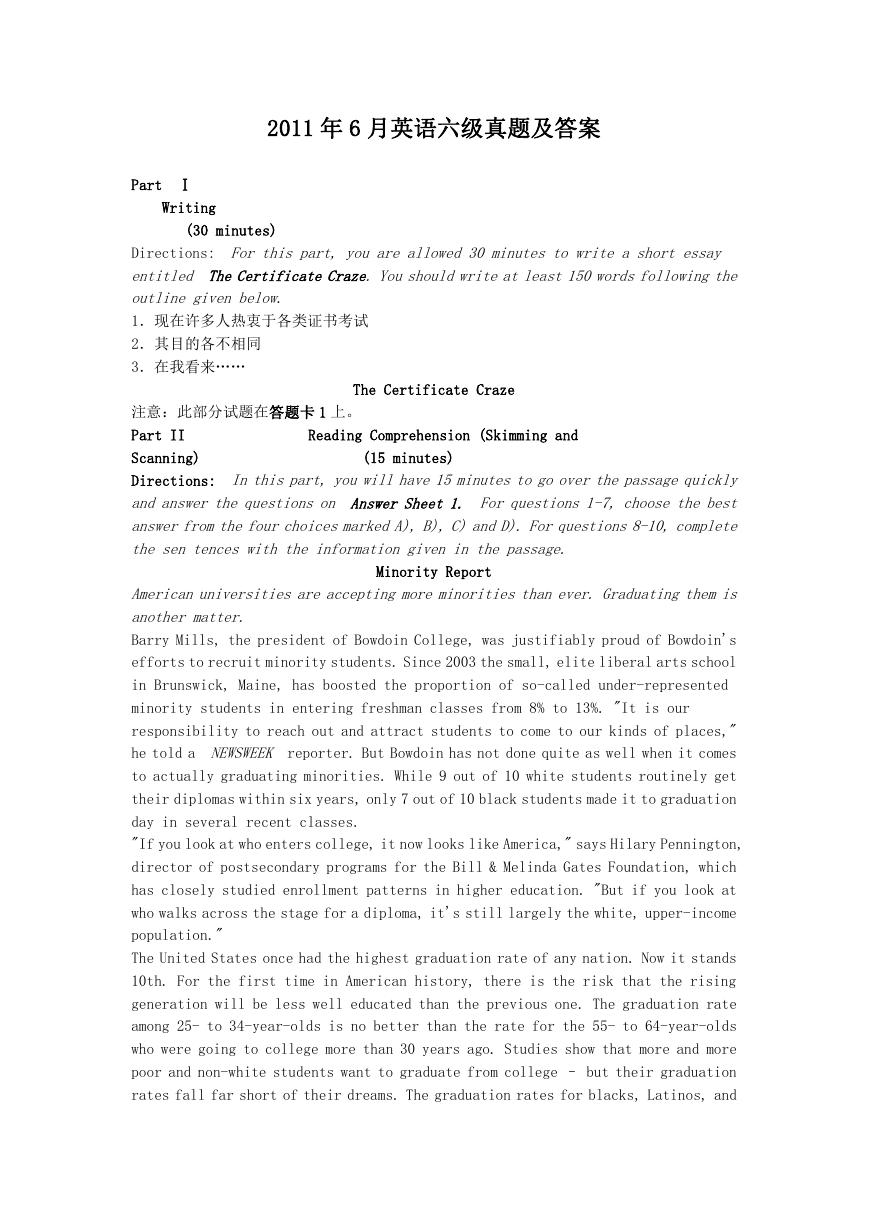
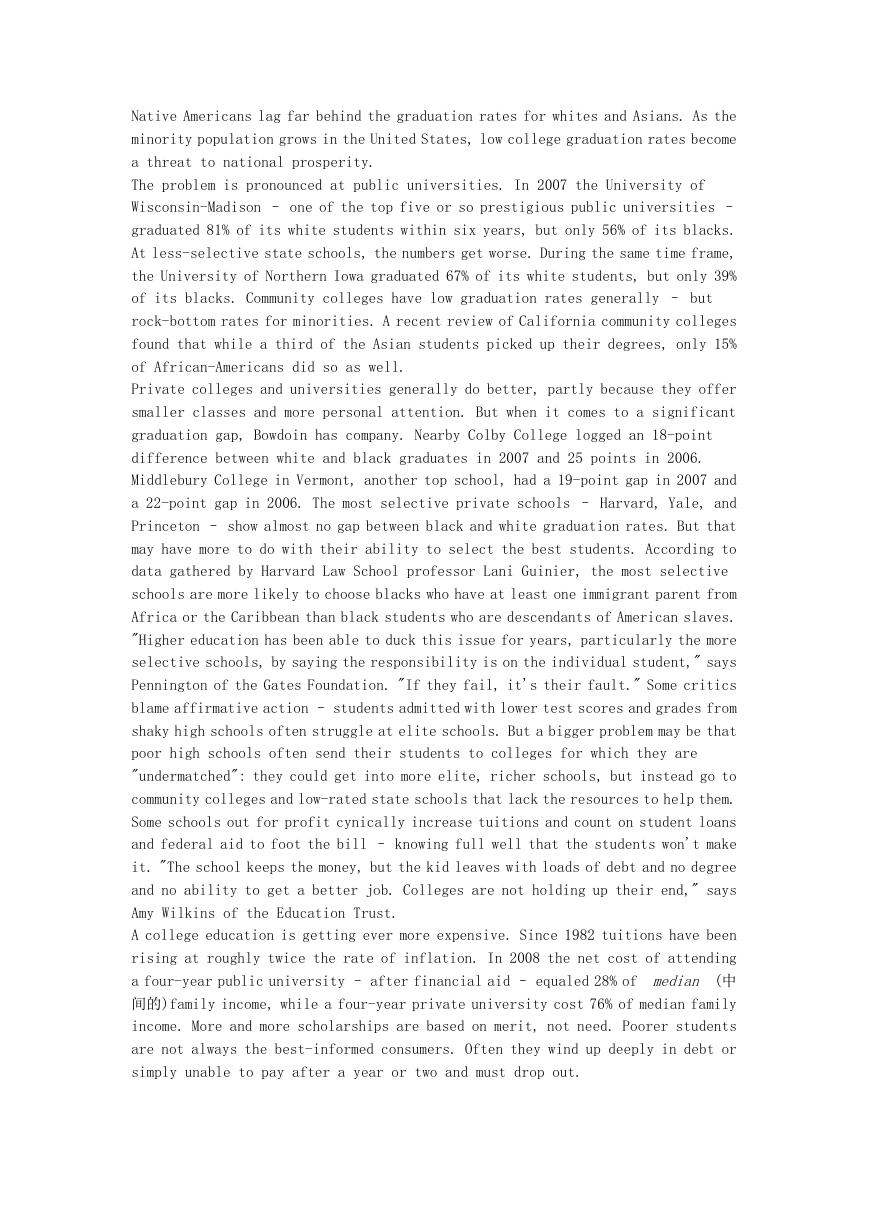

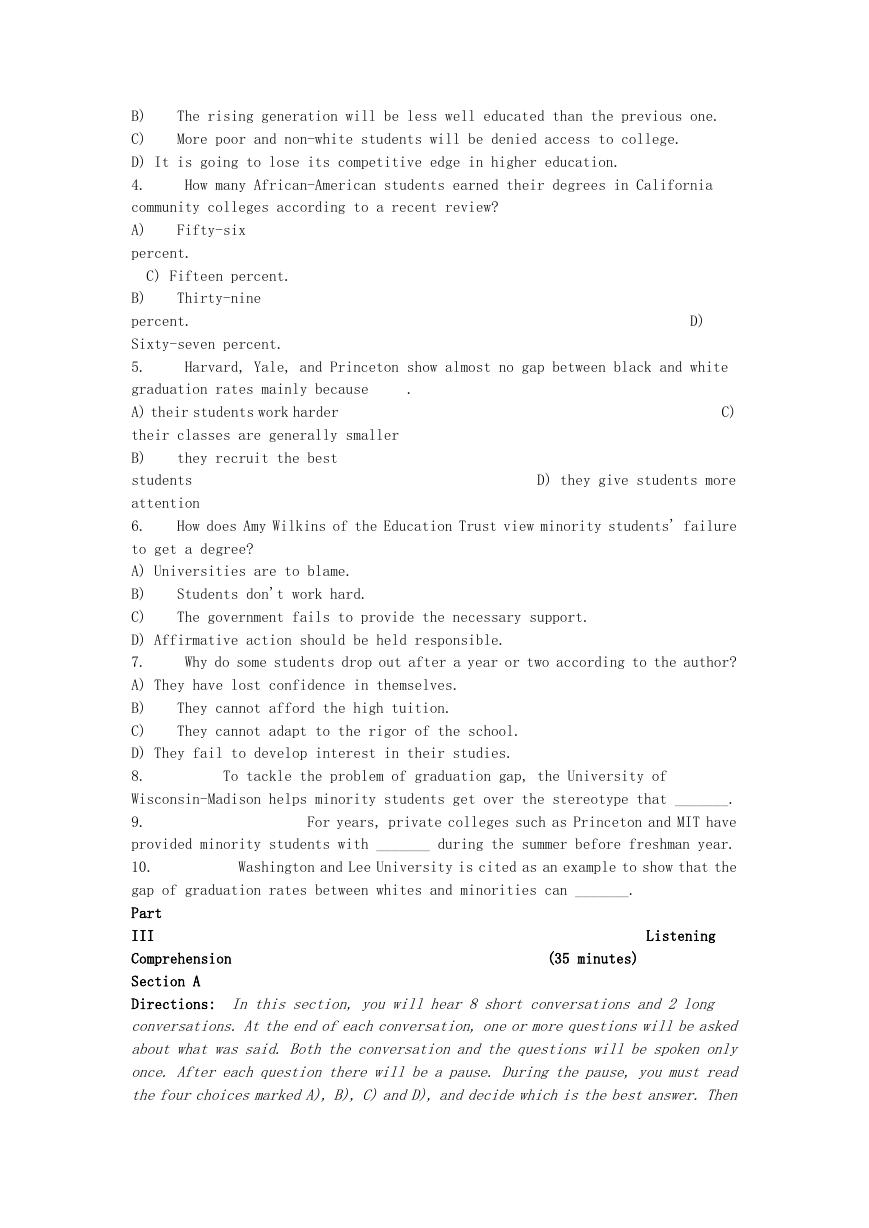
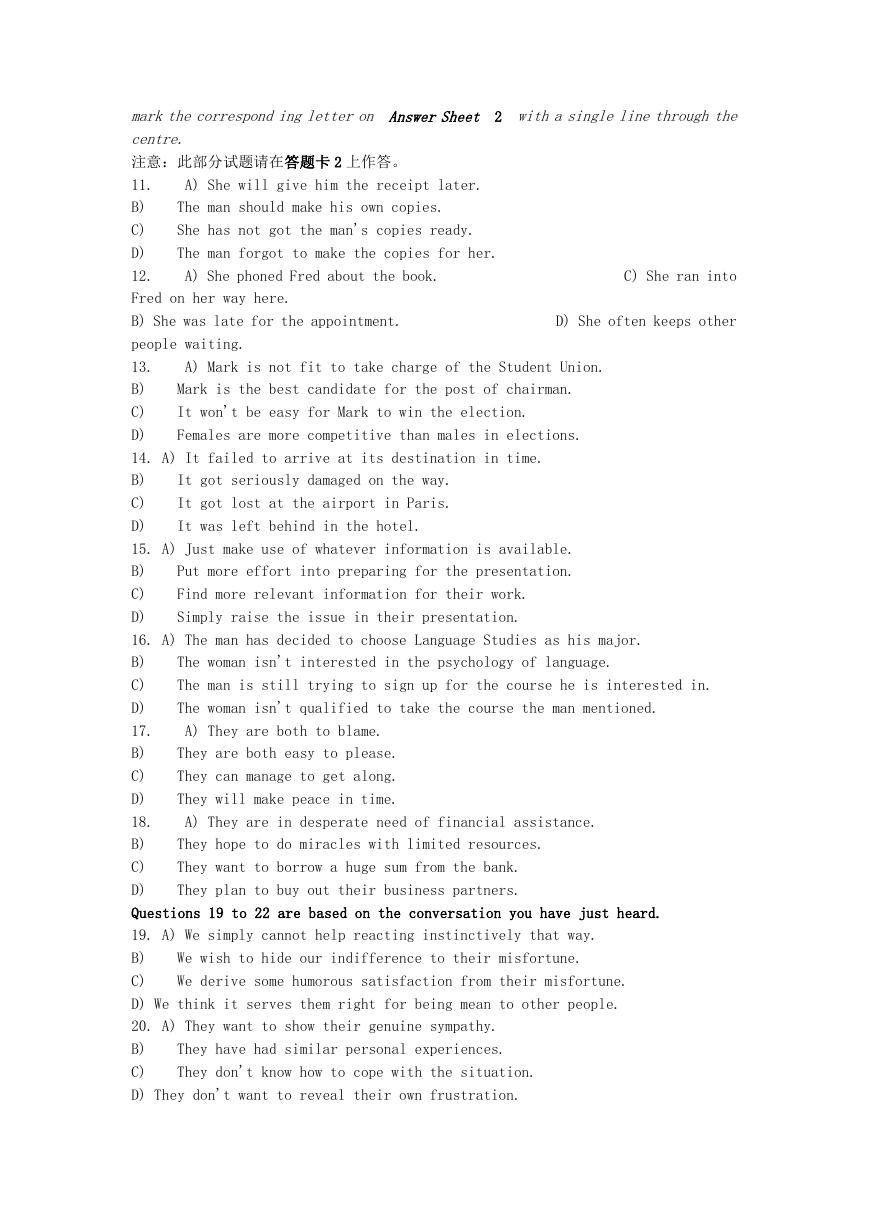
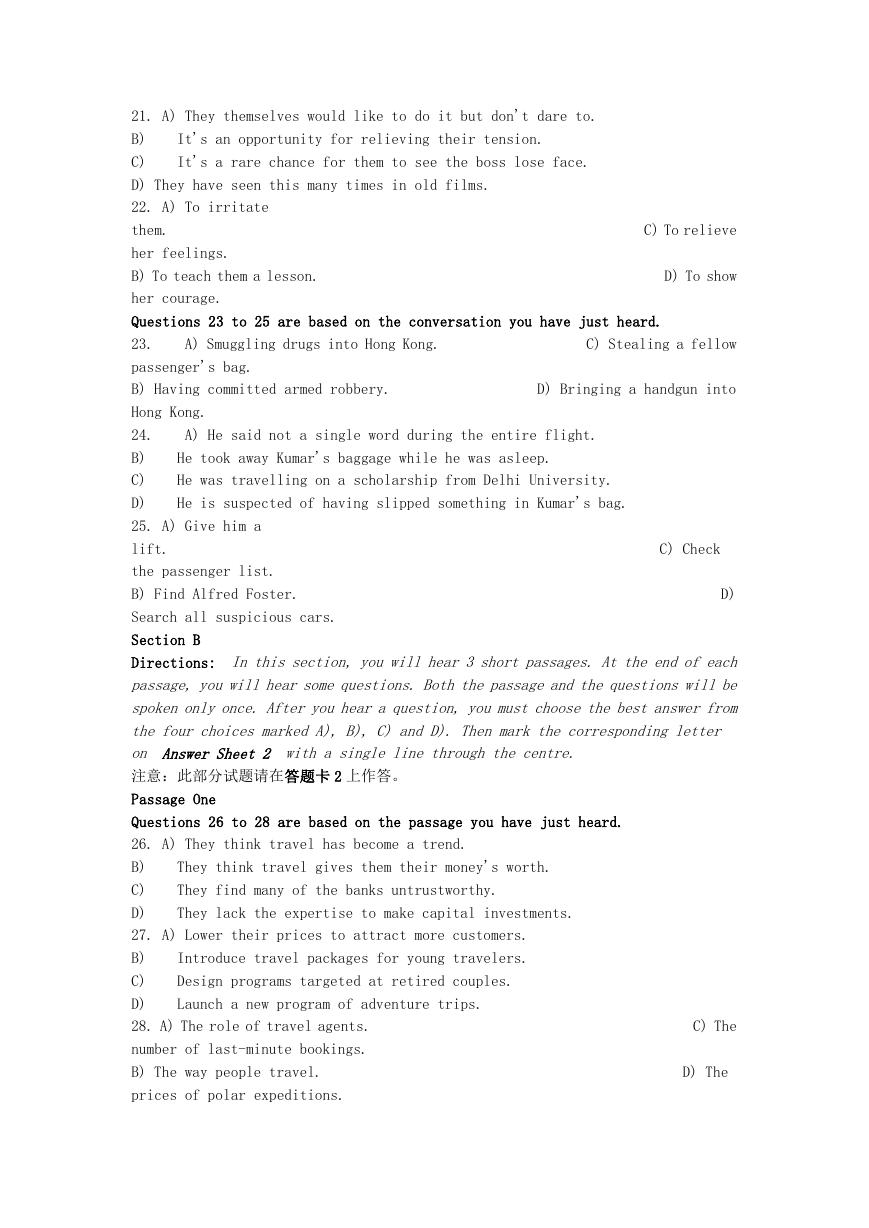
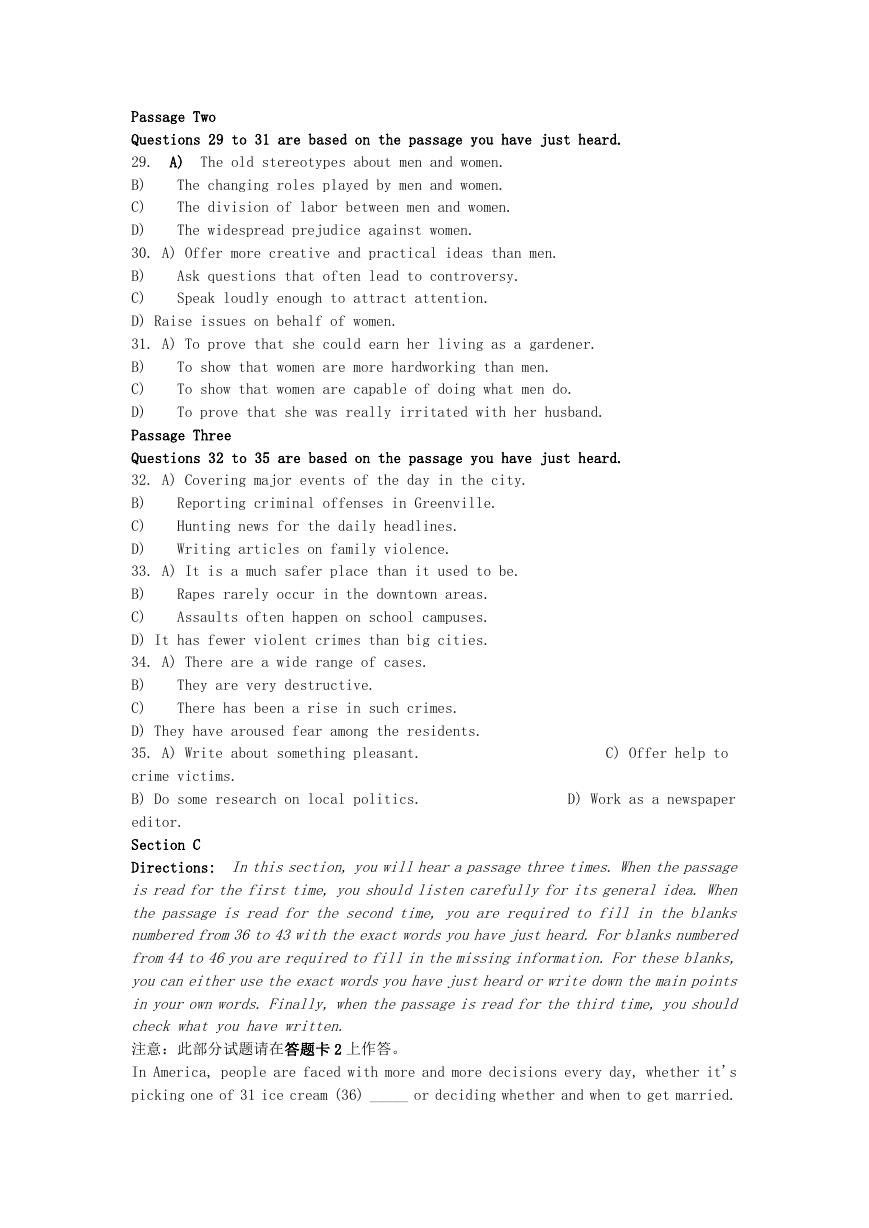
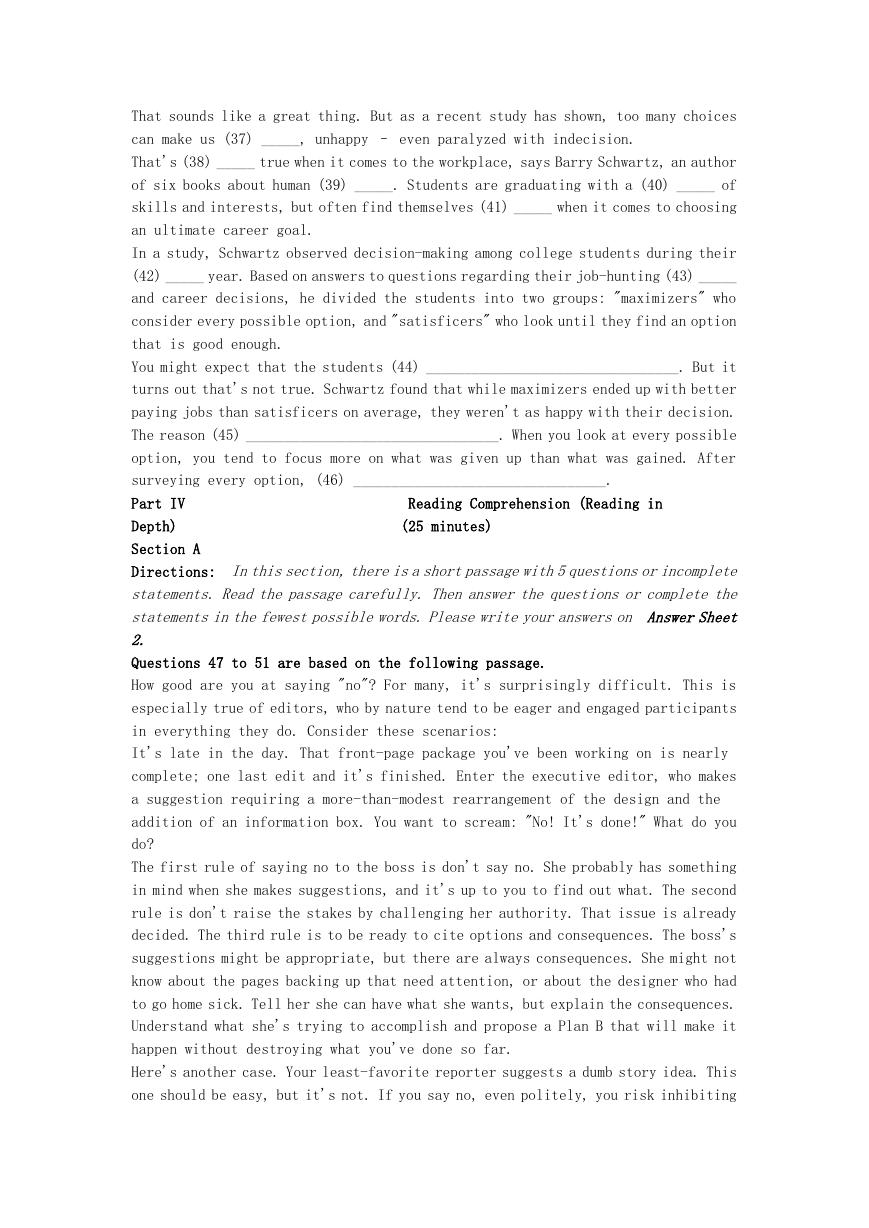








 2023年江西萍乡中考道德与法治真题及答案.doc
2023年江西萍乡中考道德与法治真题及答案.doc 2012年重庆南川中考生物真题及答案.doc
2012年重庆南川中考生物真题及答案.doc 2013年江西师范大学地理学综合及文艺理论基础考研真题.doc
2013年江西师范大学地理学综合及文艺理论基础考研真题.doc 2020年四川甘孜小升初语文真题及答案I卷.doc
2020年四川甘孜小升初语文真题及答案I卷.doc 2020年注册岩土工程师专业基础考试真题及答案.doc
2020年注册岩土工程师专业基础考试真题及答案.doc 2023-2024学年福建省厦门市九年级上学期数学月考试题及答案.doc
2023-2024学年福建省厦门市九年级上学期数学月考试题及答案.doc 2021-2022学年辽宁省沈阳市大东区九年级上学期语文期末试题及答案.doc
2021-2022学年辽宁省沈阳市大东区九年级上学期语文期末试题及答案.doc 2022-2023学年北京东城区初三第一学期物理期末试卷及答案.doc
2022-2023学年北京东城区初三第一学期物理期末试卷及答案.doc 2018上半年江西教师资格初中地理学科知识与教学能力真题及答案.doc
2018上半年江西教师资格初中地理学科知识与教学能力真题及答案.doc 2012年河北国家公务员申论考试真题及答案-省级.doc
2012年河北国家公务员申论考试真题及答案-省级.doc 2020-2021学年江苏省扬州市江都区邵樊片九年级上学期数学第一次质量检测试题及答案.doc
2020-2021学年江苏省扬州市江都区邵樊片九年级上学期数学第一次质量检测试题及答案.doc 2022下半年黑龙江教师资格证中学综合素质真题及答案.doc
2022下半年黑龙江教师资格证中学综合素质真题及答案.doc